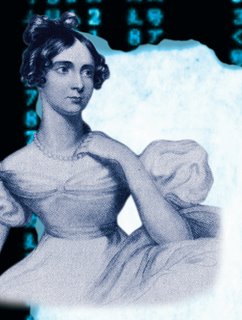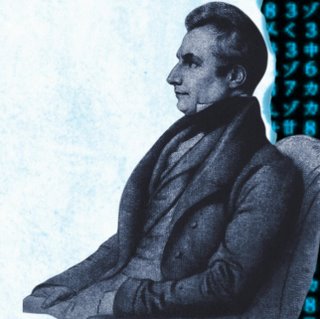He was the father of computing. And she was his devoted assistant. Charles Babbage, born to a London banker on December 26, 1791 met Ada Lovelace (nee Bryon) when she was just 17. Both of them shared a passion for mathematics that defied normal. Babbage as a young scholar worked on Newton’s mathematical concepts, toyed with calculus, even founded the Royal Astronomical Society. But by 1820, he was involved in engineering a calculating machine – the Difference Engine – that would change history. The machine compiled multiplication tables – marking him the world’s first programmer. His thoughts then struck upon on what is based the modern day computer – the Analytical Engine – which could perform several numerical functions. Unfortunately, few believed in it enough to invest, and it exceeded the technological prowess required then.
the father of computing. And she was his devoted assistant. Charles Babbage, born to a London banker on December 26, 1791 met Ada Lovelace (nee Bryon) when she was just 17. Both of them shared a passion for mathematics that defied normal. Babbage as a young scholar worked on Newton’s mathematical concepts, toyed with calculus, even founded the Royal Astronomical Society. But by 1820, he was involved in engineering a calculating machine – the Difference Engine – that would change history. The machine compiled multiplication tables – marking him the world’s first programmer. His thoughts then struck upon on what is based the modern day computer – the Analytical Engine – which could perform several numerical functions. Unfortunately, few believed in it enough to invest, and it exceeded the technological prowess required then.
Ada Lovelace had, however, become a dear friend over the years. Born in 1815, she was the daughter of a romantic poet Lord Bryon, who left his wife Anne Isabelle Milbanke within a year of marriage to bring up Ada alone. Anne fought deliriously to ensure the young girl didn’t become a poet and pushed her into mathematics. Her inborn creativity, however, was hard to contain and burst in the form of a design for flying machine in 1828. However, such pursuits by women in her age weren’t welcome, but her friendship with Babbage gave her the much needed intellectual stimuli. Married to the Earl of Lovelace, Ada understood Babbage’s work intimately.
her into mathematics. Her inborn creativity, however, was hard to contain and burst in the form of a design for flying machine in 1828. However, such pursuits by women in her age weren’t welcome, but her friendship with Babbage gave her the much needed intellectual stimuli. Married to the Earl of Lovelace, Ada understood Babbage’s work intimately.
When an Italian mathematician wrote about Babbage’s Analytical Engine, she was entrusted by Babbage to translate and fine tune it. She articulated Charles Babbage’s work better than anyone else, and saw it as an everyday computer. She described “the engine [is] the material expression of any indefinite function of any degree of generality and complexity” and even foresaw digital music! The disciple died of cancer at a ripe age of 37, much before Charles, but his work lived through and her notes founded the computing era.
One for the King and cheers for the Countess!
 the father of computing. And she was his devoted assistant. Charles Babbage, born to a London banker on December 26, 1791 met Ada Lovelace (nee Bryon) when she was just 17. Both of them shared a passion for mathematics that defied normal. Babbage as a young scholar worked on Newton’s mathematical concepts, toyed with calculus, even founded the Royal Astronomical Society. But by 1820, he was involved in engineering a calculating machine – the Difference Engine – that would change history. The machine compiled multiplication tables – marking him the world’s first programmer. His thoughts then struck upon on what is based the modern day computer – the Analytical Engine – which could perform several numerical functions. Unfortunately, few believed in it enough to invest, and it exceeded the technological prowess required then.
the father of computing. And she was his devoted assistant. Charles Babbage, born to a London banker on December 26, 1791 met Ada Lovelace (nee Bryon) when she was just 17. Both of them shared a passion for mathematics that defied normal. Babbage as a young scholar worked on Newton’s mathematical concepts, toyed with calculus, even founded the Royal Astronomical Society. But by 1820, he was involved in engineering a calculating machine – the Difference Engine – that would change history. The machine compiled multiplication tables – marking him the world’s first programmer. His thoughts then struck upon on what is based the modern day computer – the Analytical Engine – which could perform several numerical functions. Unfortunately, few believed in it enough to invest, and it exceeded the technological prowess required then.Ada Lovelace had, however, become a dear friend over the years. Born in 1815, she was the daughter of a romantic poet Lord Bryon, who left his wife Anne Isabelle Milbanke within a year of marriage to bring up Ada alone. Anne fought deliriously to ensure the young girl didn’t become a poet and pushed
 her into mathematics. Her inborn creativity, however, was hard to contain and burst in the form of a design for flying machine in 1828. However, such pursuits by women in her age weren’t welcome, but her friendship with Babbage gave her the much needed intellectual stimuli. Married to the Earl of Lovelace, Ada understood Babbage’s work intimately.
her into mathematics. Her inborn creativity, however, was hard to contain and burst in the form of a design for flying machine in 1828. However, such pursuits by women in her age weren’t welcome, but her friendship with Babbage gave her the much needed intellectual stimuli. Married to the Earl of Lovelace, Ada understood Babbage’s work intimately.When an Italian mathematician wrote about Babbage’s Analytical Engine, she was entrusted by Babbage to translate and fine tune it. She articulated Charles Babbage’s work better than anyone else, and saw it as an everyday computer. She described “the engine [is] the material expression of any indefinite function of any degree of generality and complexity” and even foresaw digital music! The disciple died of cancer at a ripe age of 37, much before Charles, but his work lived through and her notes founded the computing era.
One for the King and cheers for the Countess!